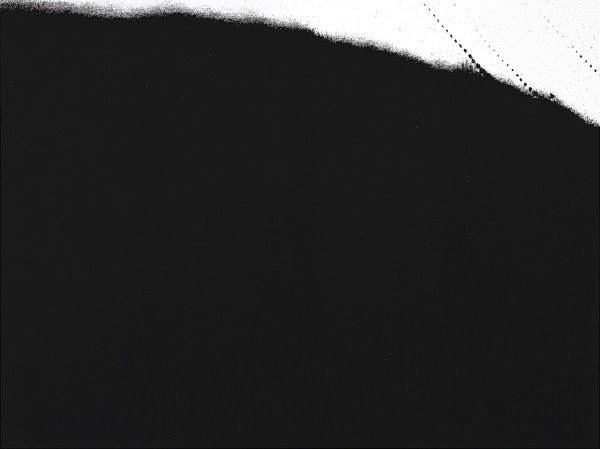Scott Short
Thursday, 9 September 2010
Work from his oeuvre.
“Scott Short’s recent paintings are the product of disciplined and structured procedures, the seriousness of which is relieved by a healthy dose of idiosyncratic intervention. Procedure first: For the past nine years, Short has produced all his paintings by taking a letter-size sheet of white, black, or colored construction paper and making a black-and-white photocopy of it. He then makes a photocopy of that photocopy, then a photocopy of that one, continuing this process several hundred times. He makes a slide from one of the late-generation copies and projects it onto a canvas, finally–and painstakingly–reproducing in black paint all the stray visual incident that accreted on the page in the process.
This seems, at first, like an abjuration of both composition and subject matter: Short allows the vagaries of his original piece of construction paper and the tendency of copying machines to emphasize any deviation from absolute blankness to provide him his source material. His repetitive photocopying leads to what could be called “abstract tonerism,” as the ink often clusters in textured bands, creating a kind of diffused grid. Some of these paintings look like details from a Georges Seurat crayon drawing. A few darken to almost pitch black, while others pick up so little ink that when painted they are practically blank white canvases. (Short started with a white piece of paper seven times here, using a yellow piece four times, and gray, red, blue, black, and green once each.) It’s all a bit like John Cage’s “Music for Piano” series (1952-56), in which the composer overlaid putatively blank sheets of paper with staff lines, thereby transforming the imperfections into notes to be played, silence ensuing wherever those random incidents were absent.” – James Yood for ArtForum.



